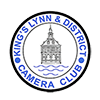What about the photographer
So, what makes a portrait minimalist, for me it’s a clean uncluttered background, sharp focus to concentrate the viewer on the subject and no distractions. I don’t mind some detail in the background but it must be out of focus and not competing with the subject. On that note avoid bright and strong colours in the background. I also think a relatively tight crop, it’s all about the face, so head and shoulders.
How to get the shot, my top tips.
Plan your pictures before you even take the camera out, know what you are looking for. Yes there is always the unknown and sometimes the shot is just there but that is unlikely. I would say all the best pictures are a result of planning.
Choose your subject carefully, it is no accident that the pictures I take have character and a certain look about them. Do I alway get what I want? Absolutely not, but at the events I mentioned there will be 100’s of people, some very photogenic and some not so much, so pick wisely. For much of my work I want older male subjects with hats and facial hairs and no glasses and people that have an interesting look.
Look before you shoot, I know it is tempting to shoot, shoot and shoot some more, and at these events there is plenty to shoot, but don’t get carried away. If you try to get everything you will likely come back with nothing. Look at the subjects, backgrounds and the light. Shoot some shots, check settings, adjust if needed and then start shooting. but be patient. Let the shot come to you, and they will.Don’t be put off by what others are doing, this won’t be a problem at most events but at Lincoln Steampunk there will be loads of photographers. I guess that’s because it’s such a large gathering. It’s all good, let them get their shots their way and you get yours. There will be plenty to go at.
Shoot long, this is key for your style, don’t get in the subjects face, use the longer lens to control the background. Olympus shooters, try a 150- 200mm and maybe even 250mm. Crop senses cameras like the R7 try about 300mm and full frame shooters 400 or even 500mm. Longer lens will make it easier to control the DOF, but it also helps with the composition and keeping distracting elements out of your pictures. How, well it’s because on the narrow angle limits the background, If you shoot wider you will have to get closer to your subject and proportionally you will have far too much background. Try it for yourself. I promise it works. I do use a monopod as that makes using a long lens much easer.
Work in AV (aperture priority) I have to confess I am not a fan of auto ISO, in part because I believe you should have an understanding of what is happening and keep some control. I set my aperture between f5.6 and f8 depending on lens, set the ISO as low as I can, keeping the shutter speed faster than the length of the lens. I don’t need super fast speeds like you may use for bird photography, 1/500 is fine.Then when shooting all I have to do is keep an eye on the shutter speed, (this is easy as it’s displayed in the viewfinder, so no need to keep looking at the back of the camera, and if the speed is to low or to high I adjust the ISO.
Use burst mode, when shooting candid/casual your subject may be moving, talking or just looking around, you will learn to pick the moment but you will almost never get it right and never all the time so shoot in bursts. Don’t keep looking at the back of your camera, in fact don’t look at the back of your camera at all, but that is really hard, we all look from time to time and most people look too much. Be confident, know it’s right, get it right in the viewfinder. When you are looking at the back of the camera you are not looking for the next shot. Remember a camera is only the tool you use to capture the image, you create the photograph.
Set your focus point, make sure you set your focus point correctly. This will be different if you are shooting in landscape to portrait orientation.Think about where the face will be in the frame and position your focus points where the eyes will be. If you set the focus in the centre of the frame you will likely move the camera to focus on the eye. This will mean your composition will be wrong, often leaving too much space at the top of the frame.
Research and practice, practice starts at home, yes at home, get your camera out and set it up. In AV move you should be able to change the ISO without taking your camera away from your eye. I use Canon so it is easy on a Canon but I believe it is “the same but different” on other cameras, there will be a dial or button somewhere. Know where it is and use it.
There are other events, I have just listed three I like, some events are free, like the Mods and Rockers, or the King’s Lynn and West Norfolk Pride (held in Tuesday Market Place) – free practice and you might even get “the shot”
I hope that is Interesting and you have fun, and I look forward to seeing you work sometime.
Steve Duncan.




